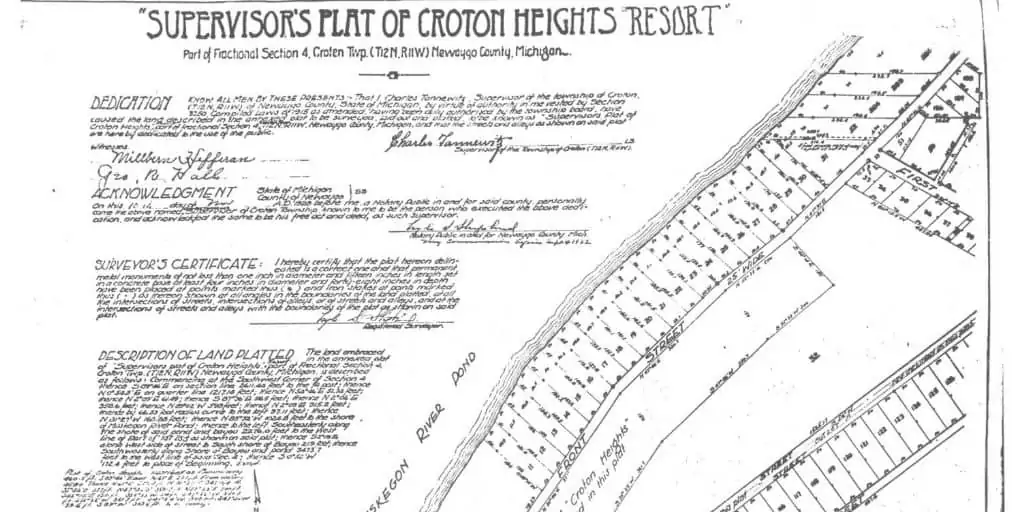What Are Parent and Child Parcels?
Shortcuts
- Parent and child parcels arise from the subdivision of a larger plot, with the original called the “parent” and the new smaller ones termed “child parcels.”
- Subdivisions allow for flexibility in development, catering to different market demands, but are subject to local regulations and zoning guidelines.
- Both parent and child parcels possess unique legal descriptions crucial for real estate transactions.
- The subdivision process typically involves surveyors who determine the boundaries and measurements of individual parcels.
- Real estate investors can profit by buying parent parcels for subdivision or developing child parcels for resale or rental.
An Overview of Parent and Child Parcels
In real estate, the concept of parent and child parcels refers to dividing land within a subdivision. When a larger piece of land is divided into smaller lots or parcels, the original larger parcel is known as the parent parcel, while the newly created smaller parcels are called child parcels. These child parcels are created by subdividing the parent parcel and typically have their own unique legal descriptions[1] and identification numbers.
Parent and child parcels are common in real estate development, particularly subdivisions. Subdivisions create smaller, individual lots that can be sold or developed separately. This practice allows property owners and real estate developers to maximize land use and accommodate various market demands.
Subdividing a parent parcel into child parcels is subject to local regulations[2] and land use planning. These regulations may include requirements for lot size, setback distances, access to utilities, and other factors that ensure proper development and adherence to zoning guidelines.
Both parent and child parcels will have unique legal descriptions[3], essential for real estate transactions and legal proceedings.
What Is a Parent Parcel?
A parent parcel is the primary or original tract of land before subdivision, representing the entirety of the property. The parent parcel can be developed to include common areas, infrastructure, and amenities the community shares, such as parks, roads, and utilities.
A surveyor is involved[4] in the subdividing process. This professional determines the boundaries and measurements of each individual parcel.
Depending on local regulations and property laws, each subdivided parcel may have different ownership, usage rights, and restrictions. The developer or a homeowners’ association (HOA) often retains ownership or control of common areas and amenities within the subdivision. Regardless, the parent parcel’s owner is responsible for its development and maintenance.
RELATED: Legal Descriptions: How They Work and Why They Matter
What Is a Child Parcel?
A child parcel is a subdivided portion of the parent parcel. Child parcels are created by breaking down the parent parcel into smaller lots. These smaller parcels are then sold to individuals or entities to construct homes, businesses, or other structures.
Because each child parcel is a separate legal entity, it’s assigned a separate lot number or identifier to distinguish it from the parent parcel and other child parcels within the same subdivision. Moreover, each child parcel typically has its own boundaries, measurements, and legal descriptions, which are important for establishing ownership rights, property boundaries, and any usage restrictions that may apply to the specific parcel.
Child parcels can be bought, sold, or developed independently from the parent parcel. Like their parent parcels, they may have different owners, usage rights, and restrictions depending on the jurisdiction.
Child parcels should ideally have access to basic utilities like water, electricity, and sewage. This access can be a significant consideration during the subdivision process.
Implications in Real Estate Investing
Investors can profit from purchasing parent parcels and subdividing them into child parcels for resale. Developers can purchase child parcels, develop them, and potentially realize a substantial return on investment (ROI) through the resale of improved properties or rental income.
That said, developers who want to invest in subdivisions need to consider the following.
Property Valuation and Appraisal
The value of a parent parcel might differ significantly from its child parcels when subdivided. Factors such as location, access to amenities, and size play a role in determining each parcel’s value[5].
Many appraisers study how long and how much it will take to sell all child parcels created by the subdivision. Based on this study, an appraiser will then develop an income stream model to place the property’s value.
Buyers and investors should engage professional appraisers specializing in these properties to obtain accurate valuations.
Financing Considerations
Mortgage lenders and financial institutions evaluate these transactions differently from traditional single-lot purchases. Factors such as the condition of the subdivision, the existence of a homeowners’ association, and land use restrictions all play a role in the financing process.
Subdivision loans and blanket mortgages[6] are two examples of financial products that developers can access to finance subdividing projects.
Market Dynamics and Projected Returns
Finally, market trends in property values, rental income potential, and demand for certain property types within the subdivision can influence investment returns. Smaller child parcels may be more liquid (i.e., quicker and easier to sell) than large parent parcels[7], especially in a residential context.
Legal Considerations and Regulations
The division of land into parent and child parcels involves legal considerations and regulations that vary from jurisdiction to jurisdiction. Key considerations include:
Subdivision Regulations
Most jurisdictions have subdivision regulations to govern the division of land into parent and child parcels. These regulations outline the requirements for creating subdivisions, including minimum lot sizes, setback requirements, access to utilities, and road infrastructure. Compliance with these regulations ensures that the subdivision is developed in a manner consistent with local planning goals and standards.
Platting Process
The platting process[8] is essential in creating parent and child parcels. It involves preparing a detailed plat map showing the subdivision’s layout, the location of individual lots, roads, utilities, and other relevant features. The platting process typically requires approval from local planning and zoning authorities before the division of land can proceed.

An example of a plat map.
Easements and Rights of Way
Easements grant specific rights to individuals or entities, allowing them access to or use certain portions of the property. On the other hand, rights of way provide legal access to public roads or utilities. These considerations ensure that access to essential services and infrastructure is maintained for all parcels within the subdivision.
Homeowner’s Associations
HOAs manage and maintain[9] common areas and amenities in many subdivisions. Developers may need to adhere to HOA requirements and regulations when creating parent and child parcels.
Frequently Asked Questions: Parent and Child Parcels
Can child parcels be combined to form a new parent parcel?
Yes, combining child parcels[10] is a process known as “lot consolidation” or “recombination.” After subdivision, property owners might find combining two or more child parcels beneficial for various reasons, such as creating a larger development site or rectifying property boundary issues.
Check with local authorities as specific regulations, zoning requirements, or fees may be associated with this process.
How do parent and child parcel designations affect property title and ownership?
When a parent parcel is subdivided into child parcels, each child parcel gets its distinct title and can be owned separately. The original title of the parent parcel will reference the subdivision, and each child parcel will have its separate legal description. This allows for different ownership structures; for instance, one individual might own a child parcel while a corporation owns another, even though both originated from the same parent parcel.
Additionally, when purchasing a child parcel, it’s vital for buyers to conduct a thorough title search to ensure no liens or encumbrances are stemming from the original parent parcel or previous transactions.
Are there any restrictions on how many times a parent parcel can be subdivided?
The frequency and extent to which a parent parcel can be subdivided typically depend on local zoning regulations, land use policies, and development codes. Most jurisdictions have established minimum lot sizes and other requirements that need to be met with each subdivision. After a parent parcel has been subdivided to the limit allowed by these regulations, further subdivision would not be possible unless there’s a change in the rules or an exception is granted.
For instance, the State of Michigan specifically constrains the maximum number of child parcels created from one parent parcel depending on the size of the former. For example, a parent parcel that’s more than 40 acres but less than 50 acres is allowed up to 7 child parcels[11].
In addition, some jurisdictions may demand specific requirements for each child parcel, such as road frontage or size criteria, to ensure they are developable and accessible. Consult local planning or zoning departments to understand the specific constraints and opportunities for subdividing any parcel.
Sources
- How do I split or combine my property? (n.d.) Website of Washtenaw County, Michigan. Retrieved from https://www.washtenaw.org/FAQ.aspx?QID=543
- Leitner, M., Garvin, E. (n.d.) An Introduction to Subdivision Regulations. PlannersWeb. Retrieved from https://plannersweb.com/1992/07/an-introduction-to-subdivision-regulations/
- Fortenberry, J. (2022, October 3.) What is a Legal Description of Real Estate? DeedClaim. Retrieved from https://www.deedclaim.com/legal-description/
- Spyridakos, G. (2015, October 14.) Planning a Subdivision: Land Surveying & other Important Tasks to Do. LinkedIn. Retrieved from https://www.linkedin.com/pulse/planning-subdivision-land-surveying-other-important-tasks-spyridakos/
- Subdivision Analysis. (n.d.) Elliot. Retrieved from https://www.elliottco.com/properties-serviced/land/subdivision-analysis/
- Kagan, J. (2021, September 18.) Blanket Mortgage: Meaning, Overview, Advantages and Disadvantages. Investopedia. Retrieved from https://www.investopedia.com/terms/b/blanket_mortgage.asp
- Plots of Potential: Maximizing Gains Through Subdividing Land. (2023, September 8.) Berlin, Patten, and Ebling Attorneys at Law. Retrieved from https://berlinpatten.com/plots-of-potential-maximizing-gains-through-land-sales-and-subdividing/
- What Is A Plat Map? + What You Should Know. (2022, July 19.) Quicken Loans. Retrieved from https://www.quickenloans.com/learn/what-is-a-plat-map
- Lerner, M. (2021, November 17.) What is an HOA? LendingTree. Retrieved from https://www.lendingtree.com/home/mortgage/different-types-of-hoas/
- Lot Consolidation Plats. (n.d.) Point to Point Land Surveyors. Retrieved from https://www.pointtopointsurvey.com/service/lot-consolidation-plats/
- Neumann, B., (2020, March 24.) Land Division Act basics for landowners. Michigan State University. Retrieved from https://www.canr.msu.edu/news/land_division_act_basics_for_landowners








